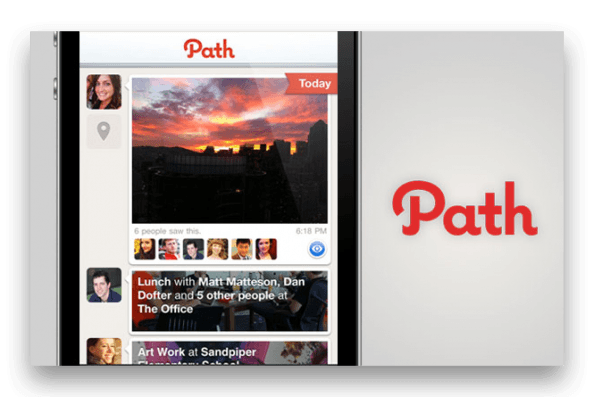CLOSE FRIENDS
Path and Facebook - The Similarities
Both Path and Facebook are social networking platforms designed to help users connect with friends and family, share updates, and engage with content.
Timeline Feature: Both apps use a timeline or feed to display updates, photos, videos, and other content shared by users. This allows users to scroll through recent activities and posts from their connections.
Photo and Video Sharing: Path and Facebook allow users to share photos and videos with their network. Both platforms offer various editing tools, filters, and enhancements to make shared media more engaging.
Status Updates: Users can post status updates on both Path and Facebook, sharing their thoughts, activities, and feelings. This feature is a core component of both platforms, encouraging users to share their daily experiences.
Private Messaging: Both platforms include private messaging features, allowing users to communicate directly with each other. Facebook has Messenger, while Path incorporated private messaging as part of its app to facilitate direct interactions.
Location Sharing: Path and Facebook offer location-sharing features, enabling users to check in at places or share their current location with their network. This feature helps friends and family know where users are and what they are doing.
Emphasis on Privacy: While Facebook’s approach to privacy has evolved over time, Path was built with privacy in mind from the start, emphasizing close-knit connections and a limited number of friends. Both platforms have provided privacy settings to control who can see user content and how it is shared.
Friends and Connections: Both Path and Facebook revolve around adding friends and connections. Path initially limited the number of friends to create a more intimate network, while Facebook allows users to have a broader range of connections.
Engagement Features: Both platforms include features to engage with content, such as liking, commenting, and sharing posts. These interactions help build community and encourage users to engage with each other’s content.
Notifications: Path and Facebook use notifications to keep users informed about activities, updates, and interactions within the app. This feature helps users stay connected and engaged with their network.
Content Discovery: Both platforms offer ways to discover new content. Facebook has its Explore and Groups features, while Path provided a way to see popular posts and updates from friends.
In summary, while Path and Facebook had different approaches and focuses, they shared many core features common to social networking platforms. Both aimed to connect people, facilitate sharing and communication, and provide a way for users to engage with each other's content. Path’s emphasis on intimacy and privacy set it apart, but it still shared many similarities with Facebook in terms of functionality and user experience.




